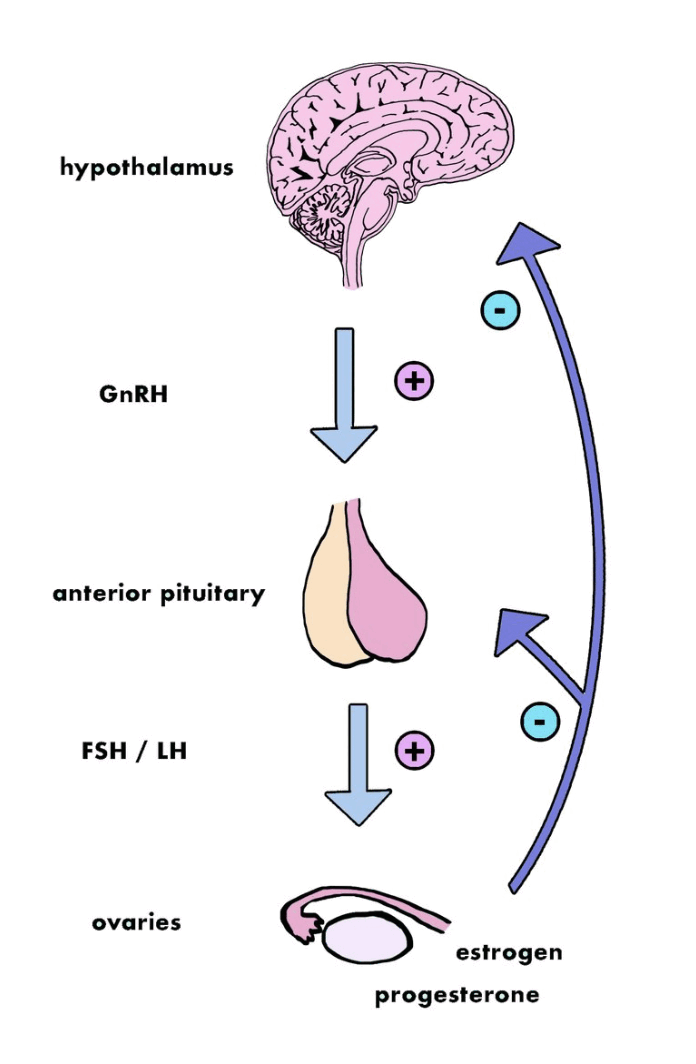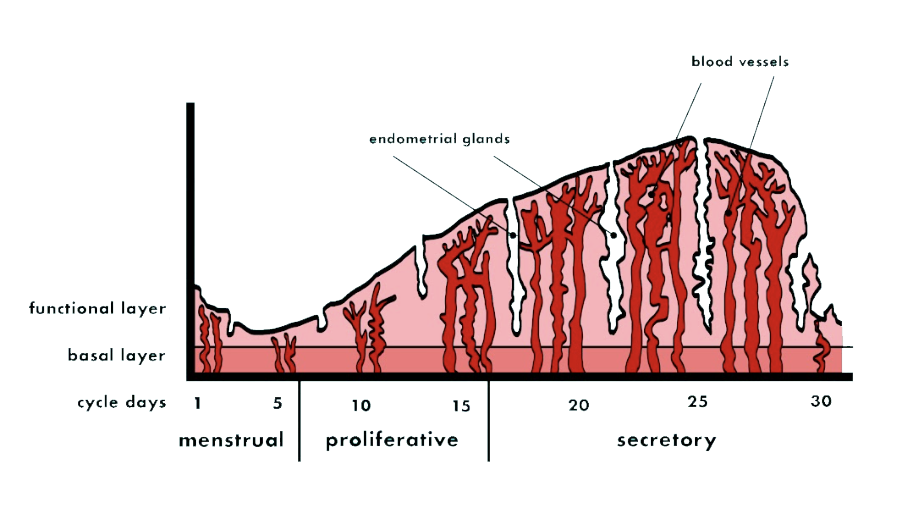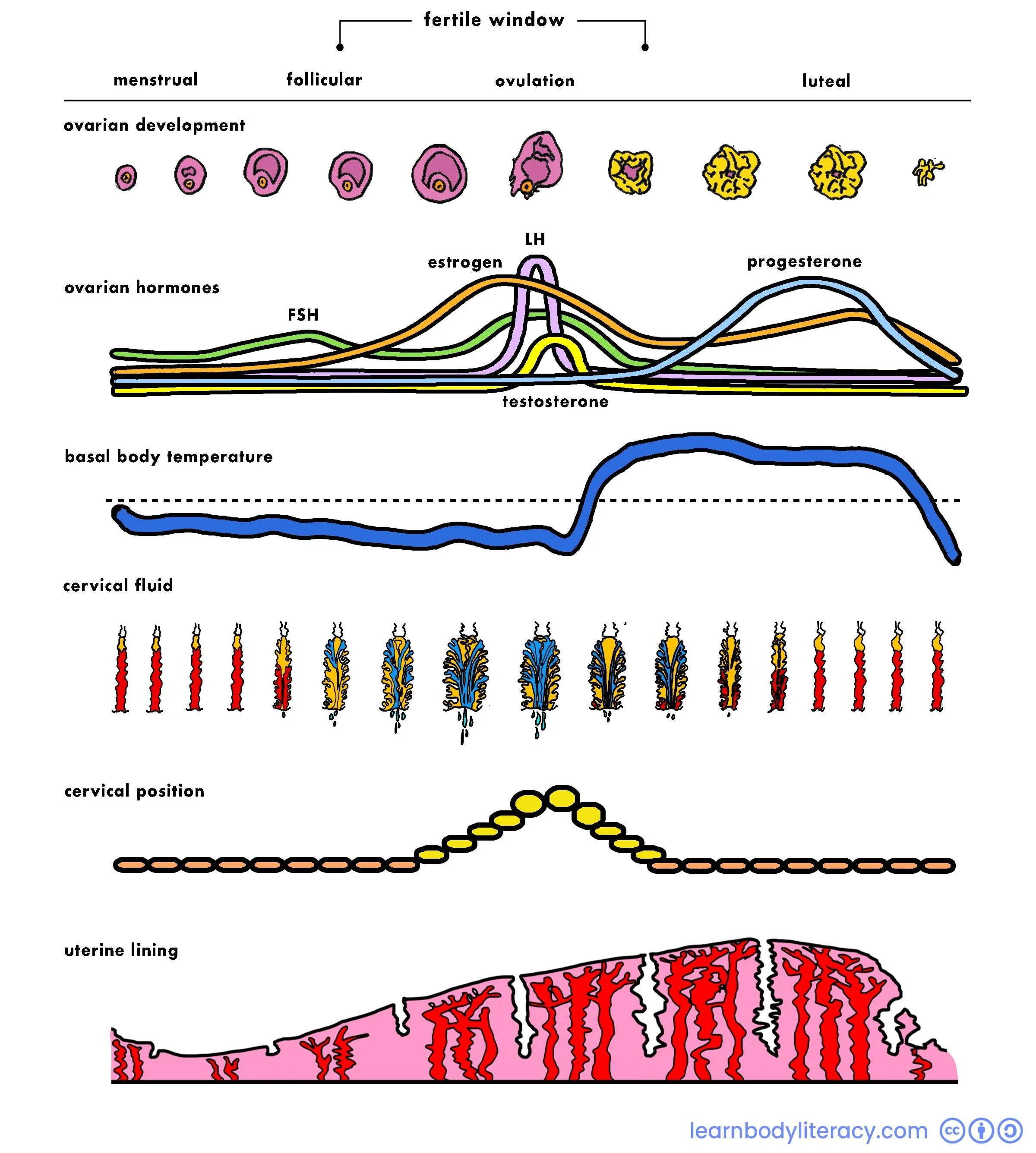The Ovarian and Uterine Cycle
The ovulatory cycle causes changes in the uterus and ovaries throughout the cycle.
Ovulation Begins In The Brain
The communication between the brain and the ovaries is called the Hypothalamus-Pituitary-Ovarian-Axis
The process begins in the hypothalamus, where gonadotropin releasing hormone (GnRH) stimulates the anterior pituitary gland
The pituitary releases a hormone called follicle stimulating hormone, or FSH, causing FSH levels to rise.
The Ovarian Cycle
High levels of FSH tell the developing ovarian follicles to secrete estrogen
Estrogen rising makes FSH levels fall
Back in the brain, high levels of estrogen and now low FSH levels tell the hypothalamus-pituitary axis to release luteinizing hormone (LH)
LH causes the mature follicle to burst open & the egg is released! This is ovulation.
After ovulation, the follicle (fluid sac that held the egg) inverts on itself, creating a temporary endocrine organ called the corpus luteum, and releases progesterone
Progesterone inhibits both FSH & LH - telling the hypothalamus-pituitary to stop releasing them for the rest of the cycle. This prevents ovulation from occurring again in the same cycle.
~2 weeks later, If the egg is unfertilized, the corpus luteum disintegrates, progesterone levels fall, and the menstrual cycle concludes with the bleed.
The Uterine Cycle
The uterine lining (endometrium) undergoes major changes during the cycle
The uterine cycle has 3 phases
Menstrual: The menstrual bleed is the detachment of the uterine lining
Proliferative: Each cycle you make new lining when estrogen starts to rise. The uterine glands start out small and sporadic looking, growing thicker and the glands becoming more coiled as estrogen peaks
Secretory: At ovulation and afterwards as progesterone rises, the glands become more coiled and the lining reaches its maximum thickness. This creates the ideal environment for a fertilized egg to implant into, which is necessary for pregnancy
Hormonal communication between the brain and the ovaries is what causes changes to the ovary and uterus, and changes we observe at the cervix and vulva.
Putting It All Together
Ovarian development: what the egg or egg sac (corpus luteum) is doing
Ovarian hormones: how the brain and ovarian hormones change levels throughout the cycle
Basal body temperature: follows the path of progesterone levels, which you only make after you ovulate
Cervical fluid: shows how the cervix mucus plug dissolves and how cervical fluid is produced when estrogen levels are high in the fertile window leading up to ovulation
Cervical position: the relative position and texture of the cervix in the vaginal canal as it responds to the hormone estrogen during the fertile window leading up to ovulation
Uterine lining: shows the shedding and regrowth of the uterine lining after menstruation, approaching ovulation, and during the luteal (secretory) phases
<< Return to the four phases explained
Next to healthy menstruation >>




